
Provides a thorough glimpse of the life of Elizabeth Bowes-Lyon, Queen Elizabeth and Queen Mother. Interesting historic archive footage of Elizabeth and King George with President Franklin D. and First Lady Eleanor Roosevelt, christening Cunard’s QE ship, and in the ruins of Buckingham Palace during WW2.
You May Also Like

Akio Sakurai has dedicated his life to honoring Jimmy Page. For 30 years he recreated vintage Zeppelin concerts note-for-note in small Tokyo clubs. Moving to L.A. to pursue his tribute dream, cultures clash and Akio’s idyllic vision meets reality.
Whatever happened to Scotland’s Silicon Glen? US giant IBM arrived at Spango Valley in post-war Greenock, attracted as part of a government effort to replace industrial jobs. For decades the company provided thousands of jobs, often at the leading edge of technology, helping to attract dozens of high-tech investments to Scotland from all over the world. What was it like to work for the company known as Big Blue? The film uncovers the stories of the shop-floor at IBM. And it tells of IBM’s supporting role in major events including the Moon landings and the creation of an iconic movie – Stanley Kubrick’s 2001: A Space Odyssey.
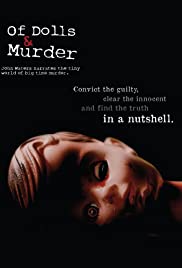
Before forensics, DNA, and CSI we had dollhouses – an unimaginable collection of miniature crime scenes, known as the Nutshell Studies of Unexplained Death. Created in the 1930s and 1940s by a crime-fighting grandmother, Frances Glessner Lee created the Nutshells to help homicide detectives hone their investigative skills. These surreal dollhouses reveal a dystopic and disturbing slice of domestic life with doll corpses representing actual murder victims, or perhaps something that just looks like murder. Despite all the advances in forensics, the Nutshells are still used today to train detectives. Documentary film, Of Dolls and Murder, explores the dioramas, the woman who created them, and their relationship to modern day forensics. From the iconic CSI television show to the Body Farm and criminally minded college students, legendary filmmaker and true crime aficionado, John Waters narrates the tiny world of big time murder.
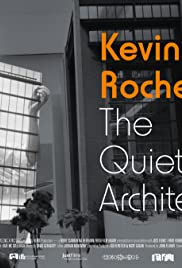
Kevin Roche: The Quiet Architect is a feature documentary film that considers many of the key architectural questions through the 70 year career of Pritzker Prize winning Irish-American architect Kevin Roche, including the relationship between architects and the public they serve. Still working at age 94, Kevin Roche is an enigma, a man with no interest in fame who refuses retirement and continually looks to the future regardless of age. Roche’s architectural philosophy is that ‘the responsibility of the modern architect is to create a community for a modern society’ and has emphasised the importance for peoples well-being to bring nature into the buildings they inhabit. We consider the application of this philosophy in acclaimed buildings such as the Ford Foundation, Oakland Museum and at New York’s Metropolitan Museum of Art for whom Kevin Roche was their principal architect for over 40 years.
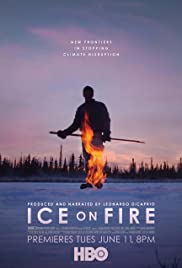
An eye-opening documentary that asks the question: Are we going to let climate change destroy civilization, or will we act on technologies that can reverse it? Featuring never-before-seen solutions on the many ways we can reduce carbon in the atmosphere thus paving the way for temperatures to go down, saving civilization.

A documentary about the race for the fastest connection and the most powerful algorithm in the high speed world of automated trading.
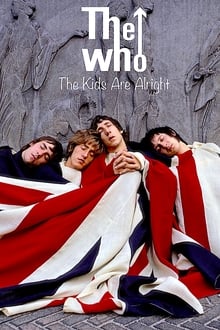
Through concert performances and interviews, this film offers us an “inside look” at this famous rock group, “The Who”. It captures their zany craziness and outrageous antics from the initial formation of the group to its major hit “Who Are You”, and features the last performance of drummer Keith Moon just prior to his death.

Expect to see Yoshiki perform new arrangements and performances of hit songs Let It Go from Frozen, and Can You Feel the Love Tonight from The Lion King. Of course, we’ll also see performances of some iconic X Japan songs such as Endless Rain, and Without You. In addition to all of this, Yoshiki will give fans an intimate look at his musical origins and recording process at his L.A. studio.
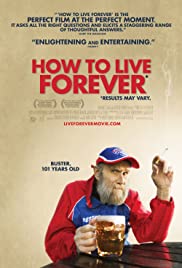
Director Mark Wexler embarks on a worldwide trek to investigate just what it means to grow old and what it could mean to really live forever. But whose advice should he take? Does 94-year-old exercise guru Jack LaLanne have all the answers, or does Buster, a 101-year-old chain-smoking, beer-drinking marathoner? What about futurist Ray Kurzweil, a laughter yoga expert, or an elder porn star? Wexler explores the viewpoints of delightfully unusual characters alongside those of health, fitness and life-extension experts in this engaging new documentary, which challenges our notions of youth and aging with comic poignancy. Begun as a study in life-extension, How To Live Forever evolves into a thought-provoking examination of what truly gives life meaning.

Iverson is the ultimate legacy of NBA legend Allen Iverson, who rose from a childhood of crushing poverty in Hampton, Virginia, to become an 11-time NBA All-Star and universally recognized icon of his sport. Off the court, his audacious rejection of conservative NBA convention and unapologetic embrace of hip hop culture sent shockwaves throughout the league and influenced an entire generation. Told largely in Iverson’s own words, the film charts the career highs and lows of one of the most distinctive and accomplished figures the sport of basketball has ever seen.
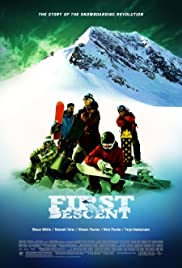
First Descent is a 2005 documentary film about snowboarding and its beginning in the 1980s. The snowboarders featured in this movie (Shawn Farmer, Nick Perata, Terje Haakonsen, Hannah Teter and Shaun White with guest appearances from Travis Rice) represent three generations of snowboarders and the progress this young sport has made over the past two decades. Most of the movie was shot in Alaska.

Produced and directed this documentary for BBC in the 1980’s, about David Gulpilil, acclaimed Australian Aboriginal actor, dancer and musician. The film shows how Gulpilil is always working to bridge the gap between the tribal Aboriginal and Western worlds. He divides his time between a traditional tribal lifestyle and his artistic work, which has included major film roles, collaboration with contemporary dance and music groups and teaching Aboriginal dance and culture. Bill and David travel to Hollywood where David was the most popular Australian in the world at that time, with FOUR films playing in America – WALKABOUT, STORM BOY, THE LAST WAVE and MAD DOG MORGAN. After relating to both the black and native American cultures and filming a quick scene for a big Hollywood picture, he pines to head back through the Outback to his beloved Arnhem Land. Edited by Simon Dibbs and shot by Ray Henman.